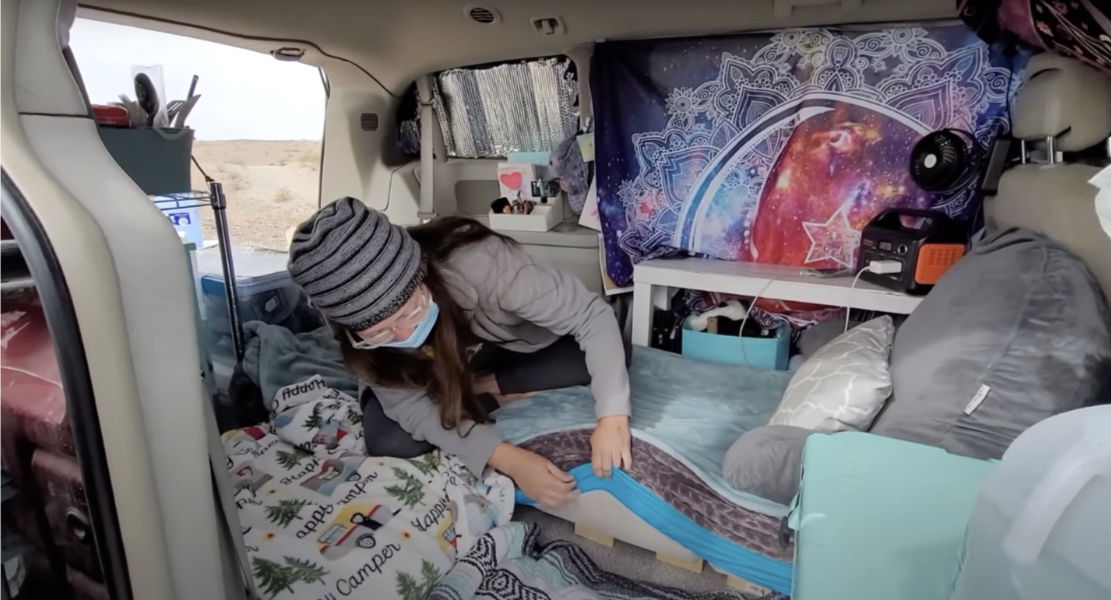
WHO ELSE OUT THERE IS OLD ENOUGH to remember plastic slipcovers? Is it still a thing? I sort of understood why some folks had them. They didn’t want the kids staining the brocade davenport with grape juice. They didn’t want Dad’s Brylcreem leaving a grease patch on the back of the Barcalounger. But in protecting the furniture they made it look icky, feel sticky and sound squeaky. They uglified the furniture to keep it attractive underneath. It was like the furniture wasn’t for their enjoyment. They were just caretakers for some unknown future owner.
Who serves who?
I’m one of those people who believes my possessions should serve me, not the other way around. And they should serve me now, not some hypothetical someone else at some other time in the imagined future. So I don’t hesitate to modify. Drill this, cut that, paint these, toss those so things work for me.

I brought the same thinking to my cargo van. What did I want it to do for me? What would work for me? Cut a big hole in the roof for a vent? Yes. Drill a smaller hole in the roof for solar panel cables? Yes. Get rid of two-thirds of the bulkhead to make things feel more spacious? Yes. Remove the passenger seat to make room for the refrigerator? Yes. It was going to be my home — until either it or I died.
On the other hand
Some of you don’t have that until-death-do-us-part relationship with your vehicle. Maybe your intent is to use the vehicle only temporarily. Maybe you plan on replacing it in the near future. Maybe you’re a part-time nomad. Maybe you’re unsure whether this life or this vehicle is right for you.

If any of those are the case, then permanent modifications are probably not the best idea. It’s better to work with the vehicle as it is — the no-build build — or only make modifications you can undo. Maybe you have somewhere to properly store the seats you removed, or you can peel off the blackout film, or unbolt the roof rack, or whatever.
On the other other hand
However, there’s the possibility your permanent modifications could enhance a vehicle’s resale value — to another nomad. “Oh cool! Most of the work has already been done! It’s almost move-in ready! Take my money!”
Consider a skoolie for example. Removing and hauling away several dozen seats is a chore, and it’s not as if you’ll end up selling your bus back to some school district when you’re done with it. You’ll sell it to someone who wants a skoolie and who’s glad the dirty work has been done.

Or let’s say you removed the passenger and rear seats from a Prius. Not many buyers would want it, but a nomad could see how much more room there is, and appreciate the platform you added. “Wow, I could actually live in here.”
The trick is to target your special market when you want to sell. Don’t just run a Craig’s List or Facebook Marketplace listing. Advertise on nomad forums. Show it at nomad gatherings. You could even sweeten the deal with equipment you won’t be needing in your next rig.
What are you worth?
The way I see it, the big question is whether any extra money you might make on an unmodified vehicle is worth spending part of your precious life in a rig that didn’t really fit you and your needs, that made you struggle. Would you have been more comfortable, more happy, with a modification or two?

Good thoughts. But I’m new at all this plus a senior, so modifying is scary to me. I have 3 “dressers” , a very small bed,, curtain over back doors….that’s all I’ve done so far. I don’t know anyone to help with drilling holes, which kinda is scary too. Its been a very slow process for me, but I consider this my home now.